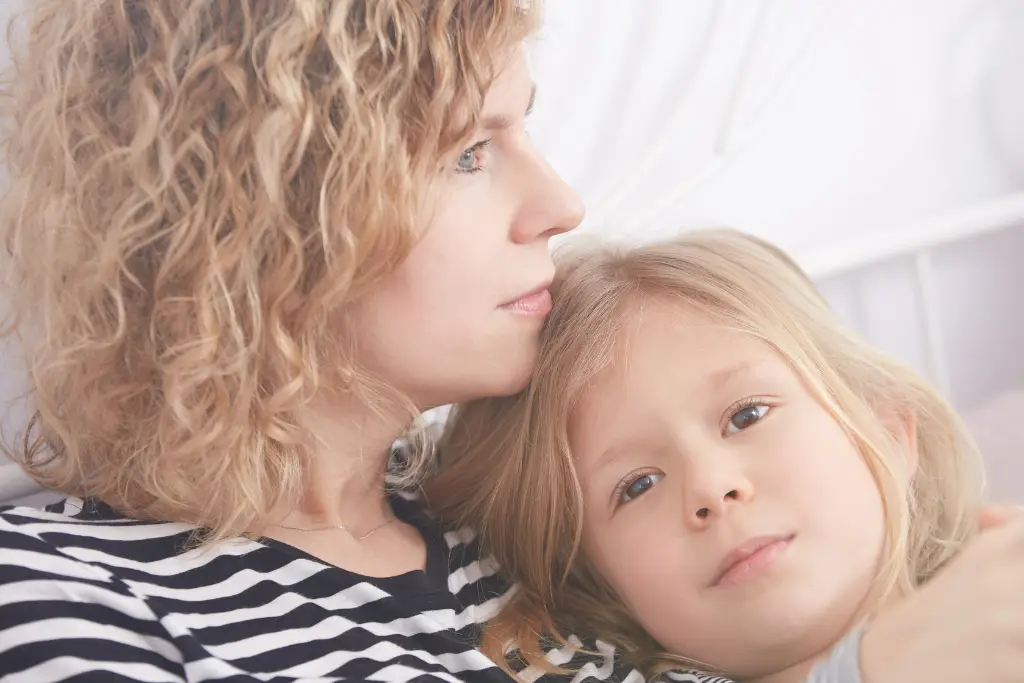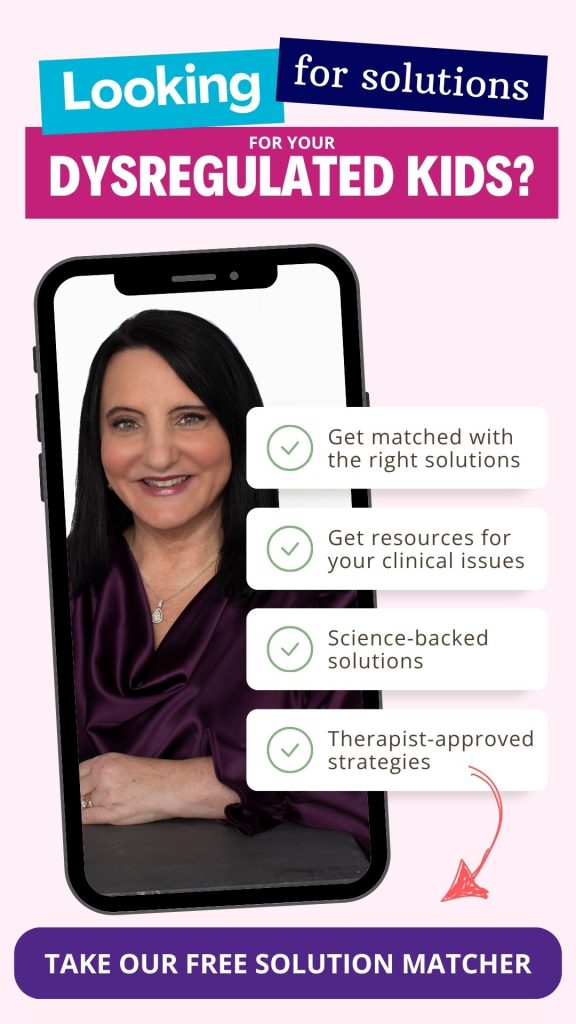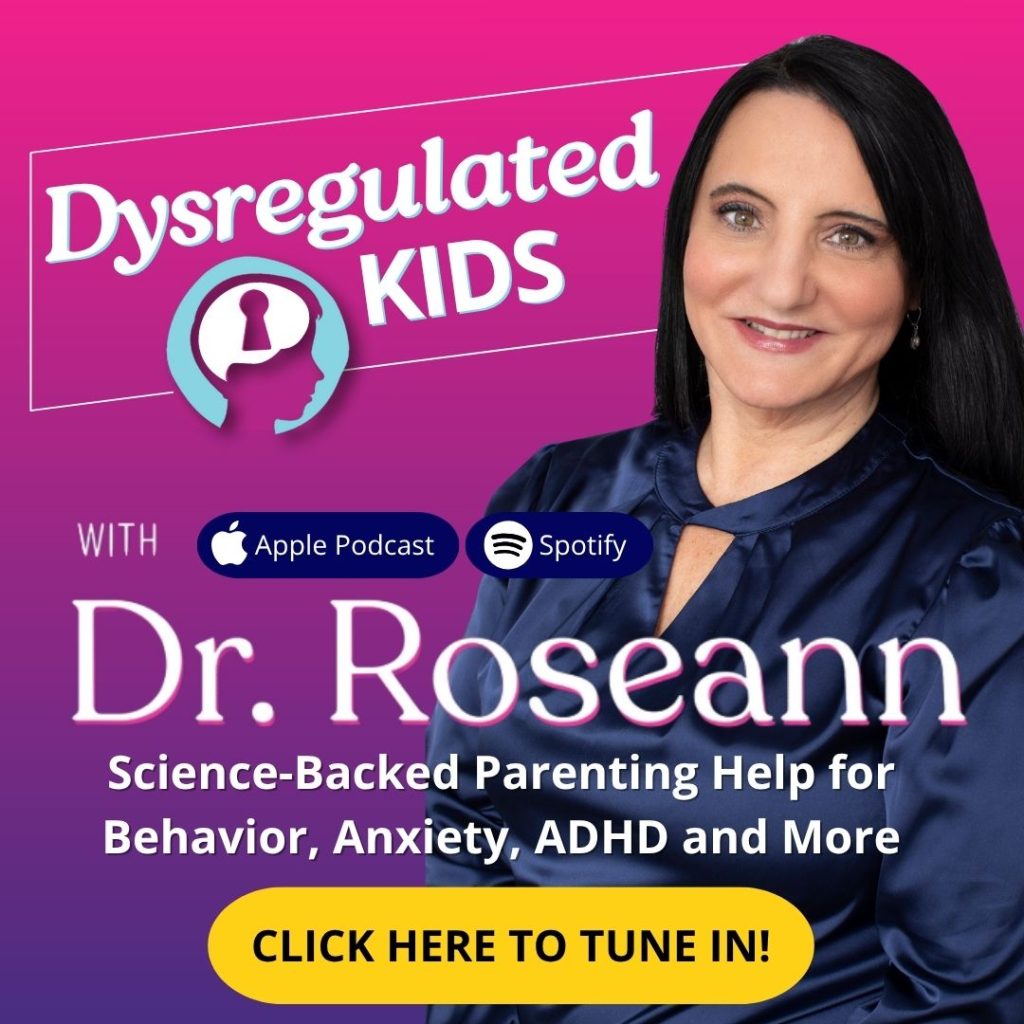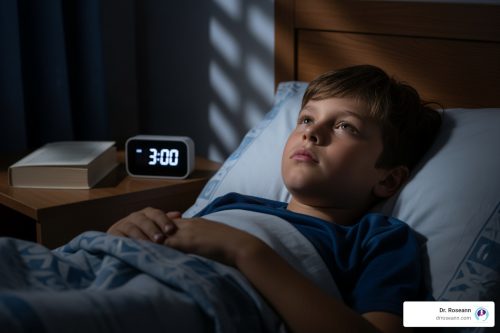Ever wonder if your child’s behavior is just a phase—or something more? This blog breaks down childhood mental disorders in a way that makes sense for parents who just want answers, support, and solutions.
If your child’s behavior feels out of control lately, you’re not alone. Maybe they’re more anxious than usual, refusing to go to school, or struggling to focus no matter how many reminders you give them.
These changes can be confusing and overwhelming for parents—especially when you’ve tried everything from sticker charts to therapy and still aren’t seeing results.
So, how do you know if it’s just a phase… or the early signs of a childhood mental disorder?
In this guide, we’ll walk you through what mental health conditions in children can look like, how to spot them early, and what real, effective solutions are available.
What Are Childhood Mental Disorders?
Childhood mental disorders are emotional, behavioral, or developmental conditions that affect how a child thinks, feels, and acts. And when you’re living it day-to-day—navigating tantrums, refusals, or a child who just seems “off”—it can feel like you’re the only one.
What Are 10 Early Warning Signs and Symptoms of Mental Health Problems?
Mental health challenges in children rarely appear out of nowhere—there are usually early signs that a child’s brain is working harder than it should. Not every symptom means a diagnosis, but consistent patterns signal that a child may need support.
Here are 10 early warning signs to watch for:
- Sudden mood changes — intense irritability, sadness, or anger that seems out of proportion to the situation.
- Withdrawing from friends or family — choosing isolation over activities they used to enjoy.
- Changes in sleep — difficulty falling asleep, nightmares, or sleeping much more or less than usual.
- Persistent worries or fears — especially when they interfere with daily life, school, or routines.
- Drop in school performance — trouble concentrating, completing assignments, or staying organized.
- Loss of interest — pulling away from hobbies, sports, or play they once loved.
- Physical symptoms without a medical cause — headaches, stomachaches, fatigue, or nausea tied to stress.
- Increased emotional outbursts — more meltdowns, anger, or difficulty calming down.
- Avoidance behaviors — refusing school, activities, or social situations because they feel overwhelmed.
- Changes in eating habits — noticeable appetite increases, decreases, or picky eating tied to anxiety or mood.
Why this matters:
When these signs show up consistently, they’re the brain’s way of saying, “I need help.” Early support—calming routines, co-regulation, structure, or professional guidance—can make a significant difference in a child’s long-term emotional health.
And while many of the conditions we’ll discuss are rooted in childhood, it’s also helpful to consider how unresolved dysregulation can follow a child into adolescence or young adulthood — showing up in ways such as ‘failure to launch.’
These challenges can shake your confidence as a parent. But let’s get this straight: mental health struggles in kids aren’t about poor parenting or a lack of discipline. They’re biologically based conditions that affect the nervous system, and they deserve real attention and support.
If you’ve ever thought, “What am I doing wrong?”—please hear this: You’re not doing anything wrong. Your child’s brain is struggling, and there are solutions that can help.

What Are the Most Common Mental Health Conditions in Children?
Children can experience a range of mental health issues, and it’s not always obvious at first. Many parents notice small changes—a child becoming more withdrawn, more irritable, or increasingly unable to focus—and wonder if it’s just a rough patch.
These signs can be the tip of the iceberg for underlying clinical conditions. The most frequently diagnosed childhood mental health conditions tend to affect how a child learns, socializes, and copes with stress or transition. And often, parents don’t realize these struggles are rooted in the nervous system and brain functioning.
Understanding these conditions helps you become an empowered parent who can spot red flags early and get the right support in place.
- ADHD (Attention-Deficit/Hyperactivity Disorder)
- Anxiety Disorders (Generalized Anxiety, Separation Anxiety, Panic Disorders)
- Obsessive-Compulsive Disorder (OCD)
- Mood Disorders (Depression, Bipolar Disorder)
- Autism Spectrum Disorder (ASD)
- PANS/PANDAS (Sudden onset neuropsychiatric conditions triggered by infections)
How do These Clinical Conditions Affect Children’s Lives
When your child is struggling, it can feel like everything is harder—getting out the door in the morning, sitting through a school day, making friends, or just relaxing at home. And when those struggles don’t improve with the usual parenting tools, it’s easy to feel confused or overwhelmed.
That’s because many common childhood behaviors—like frequent meltdowns, worry, withdrawal, or difficulty focusing—can actually be signs of deeper clinical conditions. From anxiety and OCD to ADHD and neurodivergence, these issues can impact a , learning, social skills, and daily functioning in ways that aren’t always obvious from the outside.
Understanding how these symptoms and conditions show up in real life is a crucial step toward getting the right help. Below, you’ll find a breakdown of the most common childhood mental health and neurodevelopmental conditions, how they typically present, and what they might look like in your child’s day-to-day life.
Because when you know what you’re dealing with, you can start to take action—and that’s when true regulation of the nervous system begins.
Anxiety Disorders (Generalized Anxiety, Separation Anxiety, Panic Disorders)
- Anxiety in kids can look like stomachaches before school, excessive worry about everyday things, a need for reassurance or a fear of being apart from parents. These children may be perfectionists, avoid new situations or tasks, or have trouble sleeping due to racing thoughts.
Obsessive-Compulsive Disorder (OCD)
- Kids with OCD experience intrusive, unwanted thoughts (obsessions) and feel the urge to do specific actions (compulsions) to relieve fear and anxiety. This could mean excessive mental rituals, hand-washing, repeating behaviors, or checking things over and over.
Mood Disorders (Depression, Bipolar Disorder)
- Mood disorders can show up as persistent sadness, irritability, loss of interest in play, or extreme mood swings. Depression in kids doesn’t always look like sadness—it might look like anger, withdrawal or overlap with anxiety. Bipolar disorder includes shifts between high energy (mania) and deep lows (depression).
PANS/PANDAS (Sudden onset neuropsychiatric conditions triggered by infections)
- PANS/PANDAS are immune-driven disorders where a child can suddenly develop OCD-like behaviors, tics, separation anxiety, or even handwriting changes—often after a strep, tick-born or viral infection. It’s a dramatic and frightening change that feels like it happened overnight.
Neurodivergence
- There are many conditions that fall under the neurodivergent umbrella. While these aren’t mental health issues, they are very common in children and especially affect their learning and academics. Included are ADHD, autism spectrum disorders, AUDHD, Pathological demand avoidance (PDA), learning disabilities such as dyslexia, nonverbal learning disability (NVLD), dysgraphia, math disability (dyscalculia), executive functioning disorder and others. Even speech delays, developmental delays and other issues get grouped under this umbrella. I like to think of neurodivergence as a uniquely wired brain and more and more of us are recognizing this in ourselves and our kids.
ADHD (Attention-Deficit/Hyperactivity Disorder)
- Children with ADHD often struggle with focus, impulsivity, and staying still. They may blurt things out, interrupt others, or be constantly on the move. It’s not about laziness or defiance—their brain is wired for high stimulation and struggles to regulate.
Autism Spectrum Disorder (ASD)
- Children with ASD and others with neurodivergent conditions often have challenges with social interactions, communication, and flexibility with routines. They might have strong interests in specific topics, avoid eye contact, or become overwhelmed in noisy or unpredictable environments.
These conditions may look different from child to child, but they all involve some form of nervous system dysregulation. The good news? With the right help, kids can get back to thriving.
Julie, mom of a bright and energetic 9-year-old named Noah, noticed an overnight change in her son. One day he was joking and playing outside with friends, and the next he was tearful, obsessively washing his hands, and refusing to go to school. It was like someone had flipped a switch. Doctors initially chalked it up to anxiety, but Julie knew this wasn’t just typical stress—this was something deeper.
After countless appointments and late-night Google searches, she came across PANDAS. A specialist confirmed the diagnosis, and they started brain-based treatment at y Ridgefield, CT clinic including a QEEG brain map, immune support, and nervous system regulation strategies. Within weeks, Noah started showing glimpses of his old self. The panic eased. The rituals softened. Julie said it best: “I finally got my son back.”
How Childhood Mental Disorders Show Up in Behavior
| Disorder | Common Behaviors/Symptoms |
|---|---|
| ADHD | Inattention, impulsivity, constant movement, difficulty staying seated or focused |
| Anxiety Disorders | Excessive worry, clinginess, physical complaints (headaches, stomachaches), avoidance |
| OCD | Repetitive behaviors (checking, washing), intrusive thoughts, rituals to reduce anxiety |
| Mood Disorders | Irritability, sadness, loss of interest, sleep/appetite changes, mood swings |
| Mood Disorders | Irritability, sadness, loss of interest, sleep/appetite changes, mood swings |
| Autism Spectrum Disorder | Difficulty with eye contact, repetitive behaviors, sensory sensitivities, trouble with change |
| PANS/PANDAS | Sudden onset OCD or tics, separation anxiety, handwriting regression, emotional outbursts |
How Do I Know if Behavior is a Phase or Something More Serious?
It’s normal for kids to have big feelings—meltdowns over the wrong color cup, tears at drop-off, or big reactions to small frustrations. Most of the time, these are simply part of growing up as their brains learn how to manage stress and regulate emotions.
But when those emotional or behavioral changes stick around and begin to interfere with your child’s daily life—school avoidance, refusing to eat, constant irritability, or trouble sleeping—it’s time to take a deeper look.
As a parent, you know your child best. If something feels off, even if others say, “They’ll grow out of it,” trust your instincts. These moments can be clues pointing to something deeper happening in the brain and nervous system—something that needs your loving attention and the right support.
Watch for:
- Symptoms lasting more than 2 weeks
- Interference with school, sleep, or relationships
- Increased intensity or frequency of meltdowns
- Sudden onset after an illness or stressor
Is It Just a Phase or Something More?
| Typical Phase | Possible Sign of a Mental Health Disorder |
|---|---|
| Occasional tantrums after a long day | Frequent meltdowns that disrupt daily life |
| Worries before a test or big event | Constant or excessive worry about everyday situations |
| Prefers routine but adapts with encouragement | Rigid behavior or distress when routine is disrupted |
| Shy at first but warms up in familiar settings | Persistent social withdrawal or refusal to engage with peers |
| Moody or irritable during puberty | Prolonged sadness, loss of interest, or explosive moods not tied to situations |
| Occasionally distracted or forgetful | Chronic inattention that interferes with school or home life |
What Are the Signs of Childhood Mental Disorders?
Behavior is communication. And often, it’s the brain waving a red flag, trying to tell us that something is out of balance—something is dysregulated.
When your child melts down because they got the “wrong fork,” or freezes at the thought of going to school, it’s not about being difficult or manipulative. It’s their nervous system crying out. Their brain may be overwhelmed, under-stimulated, or stuck in survival mode.
Understanding this changes everything. Instead of asking, “What’s wrong with my child?” we begin to ask, “What’s going on in their brain and body that’s causing this behavior?” And that question opens the door to compassion, insight, and effective solutions.
Common signs:
- Frequent tantrums or meltdowns
- Difficulty concentrating or completing tasks
- Social withdrawal or clinginess
- Aggression or irritability
- Trouble sleeping or eating
- Physical complaints (headaches, stomachaches) with no medical cause
Ben’s teachers kept calling home about his disruptive behavior—blurting out in class, getting out of his seat, and constantly interrupting. They said he needed more discipline or structure. But at night, Ben wasn’t defiant—he was falling apart. He told his mom he couldn’t shut off his brain and that his thoughts just wouldn’t stop. It was heartbreaking.
After trying therapy and school accommodations with little improvement, his parents turned to QEEG brain mapping at my center. The results were eye-opening—Ben wasn’t struggling with attention due to defiance; his brain was showing classic signs of high anxiety and overstimulation. Once they focused on calming his nervous system in my BrainBehaviorReset Program, everything began to shift. With a new brain-based plan in place, Ben was able to sleep better, focus more, and feel calmer at school. The whole dynamics in the family shifted.
What Causes Mental Health Issues in Kids?
Mental health disorders are influenced by a combination of biological, psychological, and environmental factors—and understanding that interplay can help parents feel less blame and more empowered.
Biological factors include genetics, brain chemistry, and even prenatal development. If there’s a family history of anxiety, ADHD, or mood disorders, your child may be more predisposed—but that doesn’t mean their path is set in stone. Also genetic variants such as MTHFR and COMT can influence how nutrients are used in the body and can lead to a multitude of clinical symptoms.
Psychological factors involve how your child processes emotions, handles stress, or responds to challenges. A sensitive child who struggles with frustration or social expectations may develop anxiety or emotional dysregulation if those struggles aren’t supported.
Environmental factors include everything from chronic stress, poor diet, school pressures, and screen time overuse to family dynamics and exposure to toxins. Even positive changes—like a new sibling or a school move—can create ripple effects if your child’s nervous system is already on edge.
When we view childhood mental health through this broader lens, we stop seeing behavior as a parenting failure and start seeing it as what it truly is: a response to stress, dysregulation, or unmet needs. That shift is powerful—and it changes how we show up for our kids.
How Does Dysregulation Fit Into Childhood Mental Disorders?
When a child is dysregulated, their nervous system is stuck in either overdrive (fight-or-flight) or shutdown (freeze or collapse). It’s like the brain has slammed on the gas or the brakes—and either way, your child can’t steer.
In overdrive, you might see constant movement, emotional outbursts, anxiety, or impulsivity. In shutdown, your child may seem disconnected, withdrawn, or even “lazy” (when really, their nervous system is overwhelmed and shutting down to protect itself).
And here’s the important truth: Every single childhood mental health condition—from ADHD to anxiety to OCD to PANS/PANDAS—involves some degree of nervous system dysregulation. That’s why traditional behavioral interventions often fall short. Until the nervous system is regulated, true change can’t happen.
Think of it like trying to teach your child to swim while they’re drowning. You have to get them to safety—and help them feel safe—before they can learn new skills.
Types of Dysregulation
| Under Stimulated Behaviors | Overstimulated Behaviors |
|---|---|
| Trouble focusing or completing tasks | Frequent tantrums or meltdowns |
| Fatigue or appearing "checked out" | Aggression or irritability |
| Social withdrawal or apathy | Difficulty falling asleep or staying asleep |
| Sluggish or low motivation | Physical complaints (headaches, stomachaches) |
| Seeming bored or disinterested in activities | Overreacting to transitions or changes |
When you know how to spot whether your child is under- or overstimulated, you gain powerful insight into how to respond. This is the foundation of nervous system regulation—and it’s how we begin to help our kids feel safe and supported.
What Should I Do If I Suspect My Child Has a Mental Health Disorder?
First, breathe. I know how overwhelming this all can feel. You’re juggling the emotional toll of your child’s struggles, navigating systems that don’t always listen, and trying to keep it together when everything feels uncertain. But here’s the good news—there are effective solutions, and they start with understanding your child’s nervous system, not just reacting to behavior.
Mental health symptoms are the brain’s way of saying, “I need help regulating.” And when we can recognize dysregulation and its root causes—whether it’s anxiety, trauma, PANS/PANDAS, or something else—we can put the right supports in place. You don’t have to figure this out on your own. With the right information and tools, things really can get better. You’ve already taken a powerful first step by looking deeper, and that matters more than you know.
Here’s what to do next:
- Track your child’s symptoms
- Schedule an evaluation with a specialist
- Consider a QEEG brain map for brain-based insights
- Begin a calming-focused plan (nutrition, sleep, regulation tools)
Want more tools to help your child regulate their emotions?
Download our Self-Regulation Toolkit designed for overwhelmed parents: Natural Solutions Quick Start Guide
How Are Childhood Mental Health Issues Diagnosed?
For most, diagnosis usually involves more than just a checklist or a quick office visit— but in my clinical experience, it requires a deep understanding of both behavior and brain function. Many parents that I see are surprised to learn that diagnosis is a multi-step process designed to rule out other causes and pinpoint what’s really going on beneath the surface.
Some children may appear anxious but are actually experiencing inflammation in the brain from something like PANS or PANDAS. Others may seem inattentive when their real issue is sensory overload or chronic sleep deprivation. That’s why a thorough evaluation matters—and why getting the right diagnosis is about so much more than a label. It’s about finding the root cause so we can create a healing plan that actually works.
Diagnosis usually involves:
- Clinical interviews with parents and teachers
- Behavioral assessments
- Rule-outs for medical issues (like Lyme or PANS/PANDAS)
- QEEG brain mapping for a deeper look into brain function
Diagnosis is just one piece. We want to understand what’s going on in the brain, not just put a label on your child.

What Treatments and Solutions Actually Help Children’s Mental Health?
The best treatment plans are individualized, focus on regulation first, and address the brain and body—because your child’s nervous system plays a huge role in how they behave, feel, and function.
It’s not enough to slap on a label or try a one-size-fits-all behavior chart. Kids with mental health challenges need care that’s tailored to their unique needs—and it starts by calming the nervous system so the brain can actually learn and respond. That’s why we use tools like QEEG brain mapping, neurofeedback, nutrition, and PEMF—because they give us a roadmap and the ability to gently retrain how the brain functions.
Whether your child is anxious, inattentive, or stuck in loops of OCD or irritability, the brain and body have to work together for healing to happen. And when we calm the brain first, real change becomes possible—not just for your child, but for your entire family.
What works:
- QEEG brain mapping + neurofeedback
- Nutritional support (magnesium, omega-3s, gut repair)
- Therapy tailored to the child’s needs (ERP for OCD, CBT for anxiety)
- PEMF, breathing, and mindfulness for nervous system regulation

How Can I Support My Child With Clinical Mental Health Issues at Home?
Your calm is contagious. When you learn to regulate yourself, your child will start to do the same.
Why? Because kids are constantly tuning into our emotional signals—especially when they’re already dysregulated themselves. If you’re rushing, yelling, or reacting, their nervous system senses danger. But when you’re grounded, present, and calm (even if you’re faking it a little), you’re showing their brain that it’s safe to relax too.
It’s not about being perfect. It’s about progress. That deep breath you take before responding? That’s not just for you—it’s for your child, too. Modeling emotional regulation gives them a blueprint to follow when their big feelings take over. And the more we practice, the easier it becomes for both of us.
Simple ways to support:
- Create a consistent routine
- Prioritize sleep and nutrition
- Use my CALMS™ method: Co-regulate, Avoid personalizing, Look for root causes, Model coping, Support consistently
- Celebrate small wins
After learning how to co-regulate instead of reacting when they were working with me in my Dysregulation Solution Program and Community, Michelle saw her son’s daily meltdowns cut in half in just three weeks.
Before that, every evening felt like walking on eggshells—homework battles, transitions to bedtime, and even simple requests often led to emotional explosions. Michelle used to feel like she was failing, unsure how to stop the spiral. But once she understood that her child wasn’t choosing this behavior—that his brain was dysregulated—everything shifted.
She started using calm body language, deep breathing, and simple phrases to anchor her son during meltdowns. Instead of escalating with him, she began modeling the regulation she wanted to see. Over time, he started to lean into her calm instead of pushing back. It wasn’t instant, but it was transformational. Michelle often says, “When I changed how I responded, he changed how he reacted.”

Final Words on Supporting Children with Clinical Mental Health Challenges
If you’re reading this and thinking, “This sounds like my child,” that’s not a sign of failure—it’s a sign of awareness, and that’s where healing starts.
You are not alone in this journey. So many parents are quietly navigating similar struggles, questioning whether their child’s behavior is something more, and feeling unsure about what to do next. The truth? Real, science-backed solutions do exist—and they start with understanding that behavior is communication, not manipulation.
When we stop blaming ourselves or our kids—and instead get curious about what their brain and body are telling us—we begin the process of true healing.
Let’s calm the brain first. That’s where focus, connection, and emotional growth can finally take root.
Download our Self-Regulation Toolkit to get started today. Your child’s healing—and your peace of mind—can start with one small step.
Expert Opinions on Childhood Mental Health Conditions
“Children are less likely to ‘grow out’ of psychiatric disorders than they are to ‘grow into’ more debilitating conditions [if untreated].” – Harold S. Koplewicz, MD, child and adolescent psychiatrist and president of the Child Mind Institute
“I think a lot of parents are afraid they will be told they are bad parents… That is not how we approach these symptoms. We just want to work with the child and family to get the best results possible for everyone.” – Cheryl Dodds, MD, Child & Adolescent Psychiatrist, Atrium Health Behavioral Health
FAQs About Childhood Mental Disorders
Will my child just grow out of it?
Some kids go through phases, but mental health disorders typically don’t just disappear on their own. If the behavior is intense, lasting more than a couple of weeks, or interfering with daily life, it’s time to look deeper. Early intervention leads to better outcomes.
Will a diagnosis label my child forever?
A diagnosis isn’t a life sentence—it’s a roadmap. It helps explain what’s going on in your child’s brain and points the way toward effective treatment. With the right support, your child can thrive.
Does getting help mean I failed as a parent?
Not at all. Mental health challenges are not caused by bad parenting. Getting help is actually one of the most loving, proactive things you can do. It shows you’re paying attention and doing everything you can to support your child’s well-being.
What age do most childhood mental disorders appear?
Many symptoms start between ages 4 and 10, but every child is different. Early intervention makes a big difference.
Can a child grow out of a mental health disorder?
While some symptoms may improve with maturity, many disorders require supportive care. With the right help, children can thrive.
Are childhood mental disorders caused by bad parenting?
Absolutely not. These are biological and environmental conditions. Parenting support is part of the solution—not the cause.
What is the best first step if I’m unsure?
Start tracking symptoms and talk to a specialist. Consider a QEEG brain map to see what’s happening in your child’s brain.
Citations:
Merikangas, K. R., Nakamura, E. F., & Kessler, R. C. (2009). Epidemiology of mental disorders in children and adolescents. Dialogues in clinical neuroscience, 11(1), 7–20. https://doi.org/10.31887/DCNS.2009.11.1/krmerikangas
von Klitzing, K., Döhnert, M., Kroll, M., & Grube, M. (2015). Mental Disorders in Early Childhood. Deutsches Arzteblatt international, 112(21-22), 375–386. https://doi.org/10.3238/arztebl.2015.0375
Dr. Roseann Capanna-Hodge is a licensed mental health expert that is frequently cited in the media:
- CBS2 New York (Article) Experts Offer Tips On How To Help Children Deal With Anxiety.
- Parade Want to Know How to Overcome Social Anxiety? We’ve got Help!.
Always remember… “Calm Brain, Happy Family™”
Disclaimer: This article is not intended to give health advice and it is recommended to consult with a physician before beginning any new wellness regime. *The effectiveness of diagnosis and treatment vary by patient and condition. Dr. Roseann Capanna-Hodge, LLC does not guarantee certain results.
Are you looking for SOLUTIONS for your struggling child or teen?
Dr. Roseann and her team are all about science-backed solutions, so you are in the right place!
Grab your complimentary copy of
©Roseann Capanna-Hodge











